When high standards are set for publishing online, students tend to yield the greatest results. They can meet academic outcomes while learning how to be a safe and positive digital citizen.
This post goes through 10 elements of a quality blog post. Feel free to share these tips with students (they might be useful for adult bloggers too!).
10 Elements Of A Quality Blog Post
Scroll down for summary poster that you’re welcome to use in your classroom or on your blog. You’ll also find some student examples below.
1) Great Title
Does your title explain what your post will be about and encourage visitors to read on?
Put a little thought into your title and you might find your readers are more willing to click and read through your post.
Tips for writing effective blog post titles:
- Brainstorm a number of titles and then choose the best one. Many bloggers start with a “working title” and then change it before publishing.
- Make your title specific and enticing.
- Think about what will encourage readers to click.
- Avoid clickbait. That is, a title that entices readers to click but is dishonest about the content of the post, or doesn’t explain what your post is about. For example “You Won’t Believe These 100 World’s Best Study Tips”. This sort of title might over promise and under deliver. Do you really have 100 tips? Are they really the best in the world?
This flowchart from Orbit Media shows that when people come across a headline, they decide in about 2 seconds whether to click and read the post or keep scrolling.
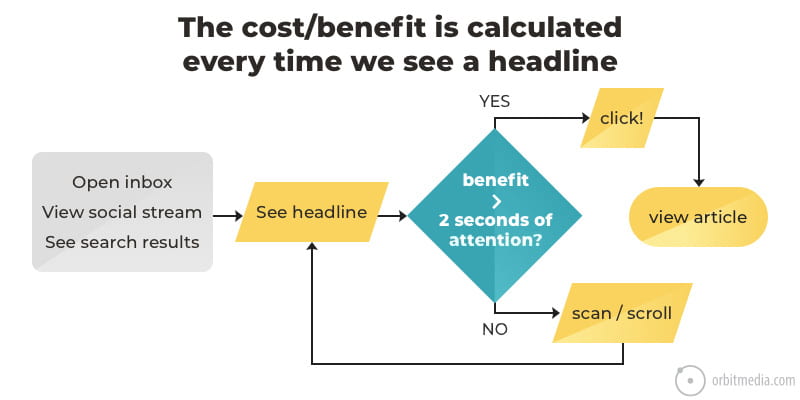
2) Short Paragraphs
Do you break up text into short paragraphs to make your posts easier to read?
Many readers will just be scanning your post and if they’re presented with a big block of text they may not read it at all.
It’s also a good idea to break up text with:
- subheadings
- bullet point lists
- numbered lists
You might have been taught at school that you don’t start a new paragraph until you change topics but this does not apply to digital writing.
Short paragraphs are good. Very good!
3) Visuals Or Multimedia As Well As Text
Does your post include at least one visual?
High-quality posts include more than just text, they have visuals as well.
Along with being nice to look at, images serve two purposes:
- They help readers understand what you’re writing about (especially if your image is something like a graph, diagram, or video).
- They break up your text and make it easier to read.
What sort of visuals can you include in posts? Here are a few examples:
- Photos you take yourself.
- Creative Commons images (this guide shows you some good websites for students).
- A graph or chart (try BEAM for an easy web tool).
- Videos (e.g. embedded from YouTube or Vimeo).
- Google Slides presentations.
- Google Drawings (check out this tutorial from Sheri Edwards).
- An image you make in Canva (learn more about Canva here).
4) Internal And External Links
Do you include links in your post either to other posts you’ve written or inspiration/ideas you’ve come across on the web?
In the past when we only wrote with pen and paper or on word processors, writing was more linear. Writing on the web is different. An important part of digital writing is using hyperlinks.
Hyperlinks are the heart of the web. They bring together various pages from different websites and your own website.
Any article you read on the web probably includes hyperlinks. It’s important for students to learn how to include these in their own writing.
Hyperlinks:
- Help readers learn more about a certain topic.
- Help readers understand where the writer is coming from.
- Cite sources to back up what you’re saying.
- Save you having to define words or ideas. You link the word/phrase to an explanation and readers can choose to explore the definition if they need to.
- Allow you to practice good online etiquette by showing where your ideas or inspiration is from.
- Remind readers of older posts you’ve written that they might like to look at.
This Edublogs help guide shows you how to add links to your blog posts.
5) Fonts And Colors
Are the fonts you use easy to read? If you’re using colors, do they stand out against your background?
Many students love playing around with different fonts, colors, and backgrounds but it’s important to always keep these question in mind:
- Can people easily read the blog post?
- Are you being consistent in your color/font choices?
- Are your fonts big enough and clear enough?
- Is there enough contrast? (e.g. red text on an orange background would be hard to read).
- Is there too much movement? This can be very off-putting for readers.
Overall, less is more!
Find out how to change your fonts and colors in this help guide.
6) Proofread
Have you proofread your work before publishing?
No one expects bloggers to be perfect but proofread work is much easier to read.
Before you publish, it’s important to check your spelling, grammar, punctuation, and spacing.
If you can, enlist the help of someone else to check your work. It’s harder to spot your own mistakes! Perhaps students could pair up with another student for proofreading.
For older students, Grammarly is a great free online tool to check your writing. Grammarly is 18+ but if you’re aged between 13-17, you can use it with permission.
7) Digital Citizenship
Have you checked that you haven’t revealed your personal information (YAPPY) or copied text/images/work that doesn’t belong to you?
It’s great for readers to learn a bit about you but it’s important to avoid sharing too much information or personal details.
I like to tell my students to never share their YAPPY online as per in the image below. There is some other information that’s more of a “grey area”. These are things that students should discuss with teachers and parents.
Students also need to make sure they’re not using work that doesn’t belong to them. This includes images as well as text and other content.
Further advice on digital citizenship and copyright:
- Read more about blogging and digital citizenship here.
- Learn more about digital footprints in this post.
- Should you publish students’ photos online? Check out this post for advice.
- Check out The Educator’s Guide To Copyright, Fair Use, And Creative Commons.
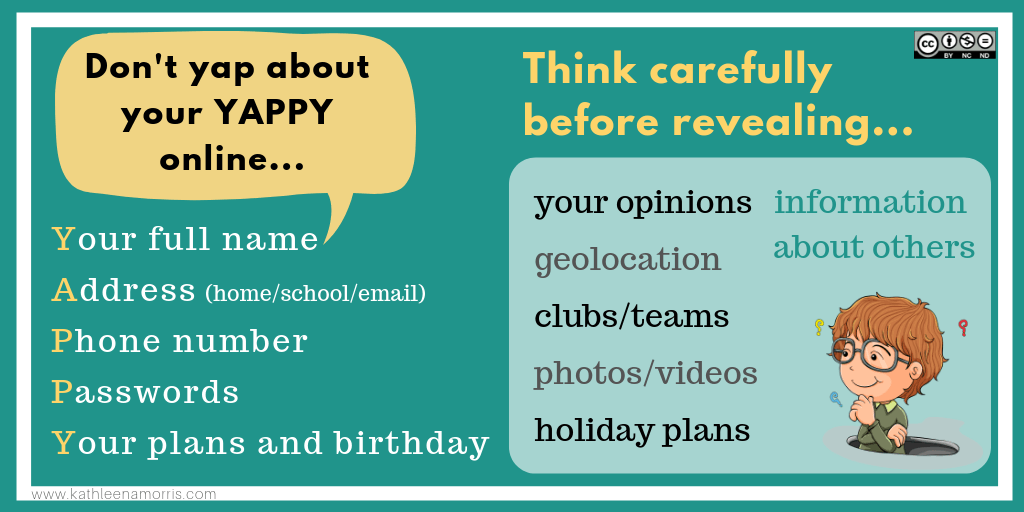
8) Categories And Tags
Do you assign your post to at least one category? Bonus points if you use tags to organize your posts too!
Tags and categories on posts are used to help readers locate information in different ways.
You don’t have to use tags but each post has to be assigned to at least one category. If you don’t do this manually, it will be assigned to a category called “Uncategorized” by default.
Take a look at this chart to learn more about the differences between categories and tags.
Learn more about using categories and tags in this help guide.
9) Questions
Do you include questions at the end of your post to encourage visitors to leave a comment?
Comments bring blog posts alive. They turn your blog from a static space to an interactive space. Some fantastic learning can happen in the comment section.
Readers can leave feedback, offer constructive criticism, or share new perspectives. This can help you grow and learn.
You can’t assume that readers will think to leave a comment. You need to invite them. Try coming up with some open-ended questions that you can include at the bottom of your blog posts.
10) Comments
Do you approve comments quickly and write polite replies?
If you do receive comments on your post, it’s important to approve them in a timely manner and write a reply.
This will encourage readers to keep returning and interacting.
Try to make your comments high-quality.
Here are some elements of a quality blog comment:
- Written like a letter with a greeting, body, and sometimes a closing.
- Includes correct spelling, grammar, punctuation, and spacing.
- The content might include questions, compliments, and/or relevant new information.
- Aim to make connections without revealing personal information like surnames, specific plans, addresses, birthdays, etc.
You won’t always include all of the above in your comments but these are the sorts of things you might aim for.
Summary Poster: What Makes A Quality Blog Post
>>Download a PDF version of the poster
Student Examples Demonstrating Elements Of A Quality Blog Post
Examples are always helpful to show students. Here are some examples of posts from Student Blogging Challenge participants.
You’ll notice the annotated posts don’t necessarily include all of the 10 elements described above. Blogging is a learning journey and it’s also a personal representation of yourself. So you don’t need to follow a formula although having some tips to refer to is always helpful.
Raise the bar and reap the rewards!
Check out the examples from students in:
- 2nd grade
- 3rd grade
- 6th grade
- 10th grade
- Higher ed/ESL
2nd Grade: Miss Blessings Class
Cherie Blessing is an experienced teacher and longtime blogger from central Vermont in the United States.
Cherie’s class blog is called The Great Adventure. Her student blogs are linked to her class blog using My Class.
Let’s take a look at examples from two of her young bloggers. The students use pen names. These students have just turned 8 years old proving you’re never too young to blog!
Fluffy: Spring
Bee Buzzer: Colonial Farmer
3rd Grade: Mrs. Yollis’ Class
Linda Yollis from Los Angeles has been blogging with her 3rd grade students for over a decade. This year she has helped her students set up individual blogs on Edublogs.
Linda has always set a high standard for students and is also very dedicated to involving parents in student learning.
Because of this, Linda’s students are already producing some fantastic work despite only blogging for a few months and only being 8/9 years old.
The students in Mrs. Yollis’ class use pen names and their work is moderated by Linda using My Class features.
Let’s take a look at two examples:
Ana’s Amazing Achievements: Tremendous Track
Veronica Pink: Fun With Pets
6th Grade: Wilderness School
The students from Year 6 at Wilderness School in South Australia have been keen participants in the recent Student Blogging Challenge.
Their students are very creative at trying out various web tools and adding an assortment of multimedia to their blogs.
One student, Lauren, even made a tutorial video for Student Blogging Challenge participants about blog headers.
Here are two examples from Year 6 at Wilderness:
Sonali: About Me
Olivia: A Quality Comment
10th Grade: Emily
Emily is a grade 10 student in the Performance Learning Program at Seycove Secondary in Canada. Her school uses a CampusPress network to host their impressive blogging program.
Emily has been blogging for nearly 3 years. You can read about her experiences with the Student Blogging Challenge in this post (she made a video about the challenge with two friends).
The following annotated post is just an example of the high-quality content that Emily regularly publishes on her blog. She’s an exceptional student and role model for other bloggers.
Along with excellent writing, Emily includes creative graphics, charts, and diagrams to make her posts a true delight to read.
Due to the length of Emily’s post, only snippets were included below. Be sure to read the full post here.
Higher Education (ESL): Mrs. Matveyeva’s Class Blog
Nadia Matveyeva is an English instructor from a university in Kazakhstan. She started a class blog this year with her second-year college students.
2019 is the second year her students have been learning English. They were excellent participants of the Student Blogging Challenge.
Here is one of their posts about family celebrations in Kazakhstan for the new year. It was written collaboratively by Nadia K., Lisa T., Christine M. and Farisa S. The poem was by Sasha R. and Ruslan B.
Due to the length of the post, only snippets were included below. You can view the full post here.
Over To You
We’ve shared the 10 elements of a quality blog post but this is not an extensive or rigid guide. No doubt, you and your students will have your own ideas about what makes a quality blog post.
We’d love you to share your own ideas and examples in the comments below.
Scroll down the find the comment box.
Further Reading
My Class: Student Blogs Made Easy
Different Approaches To Using Student Blogs And Digital Portfolios

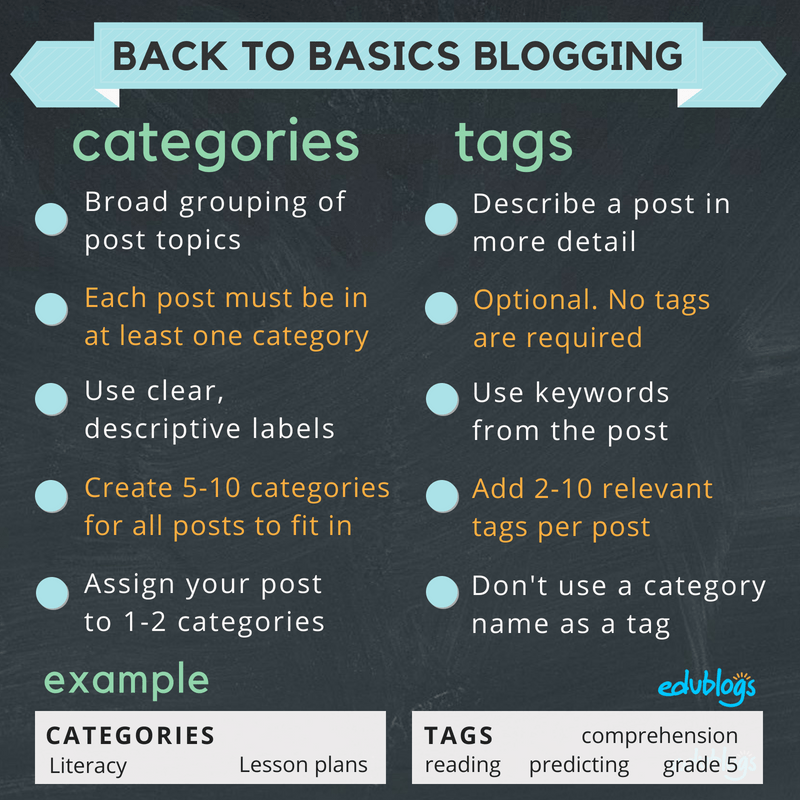
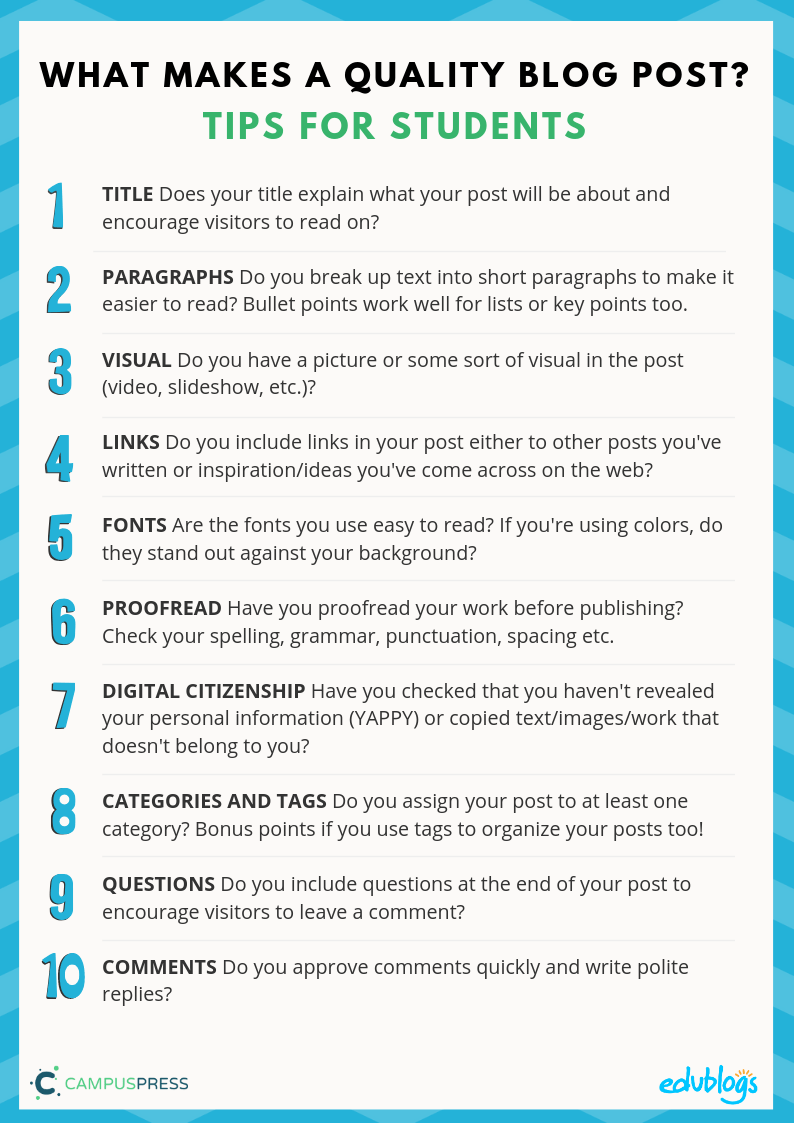
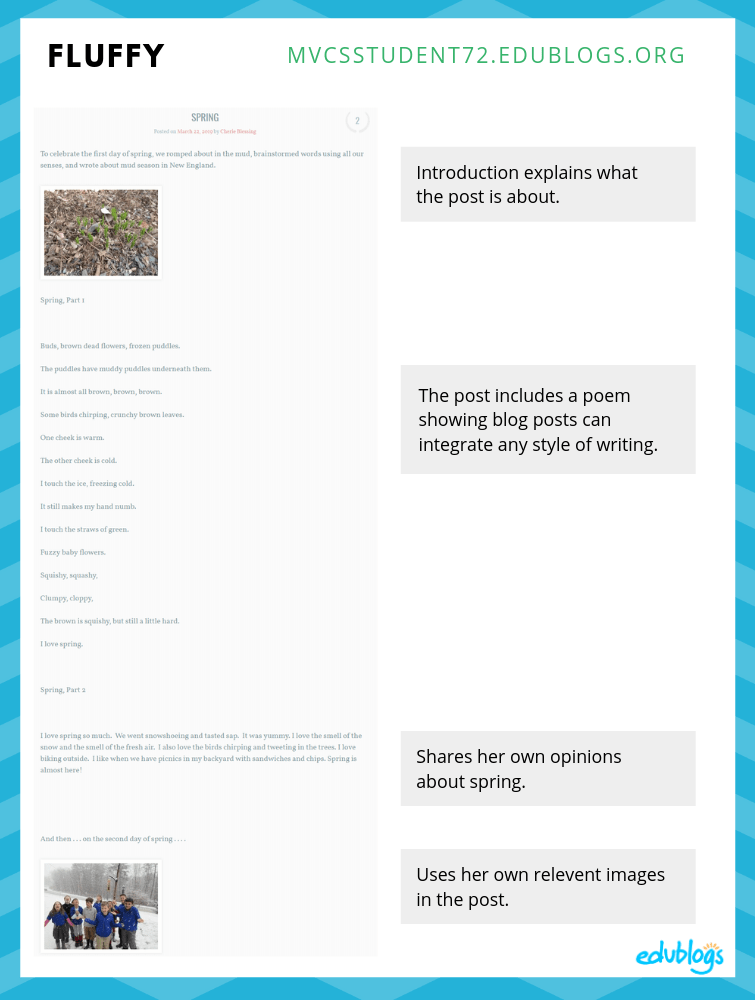




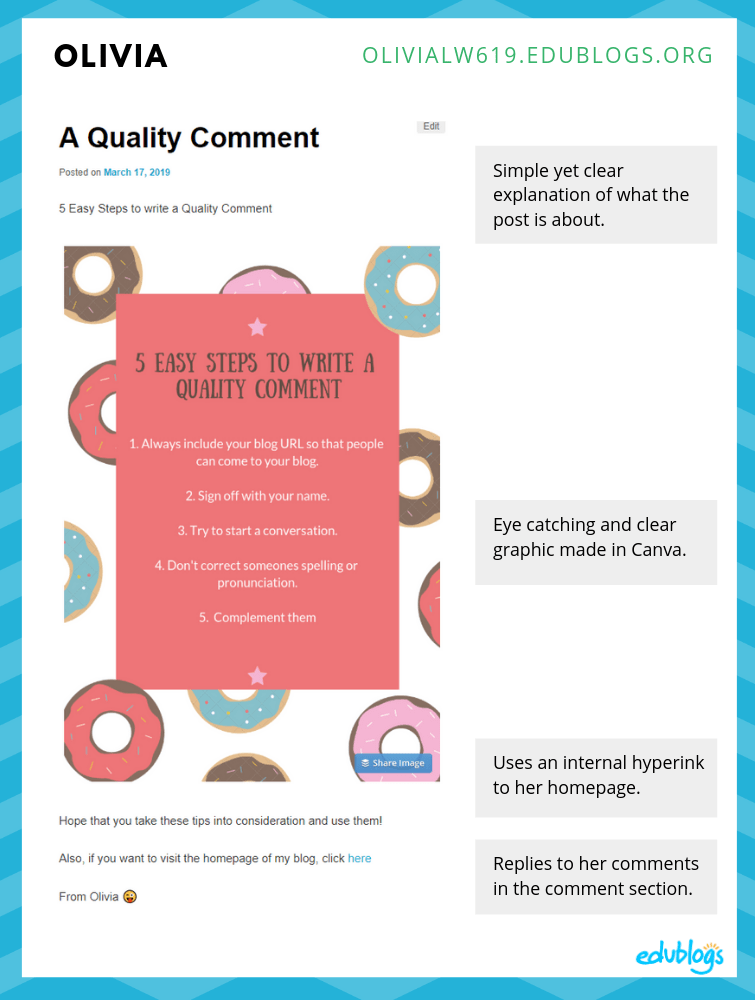
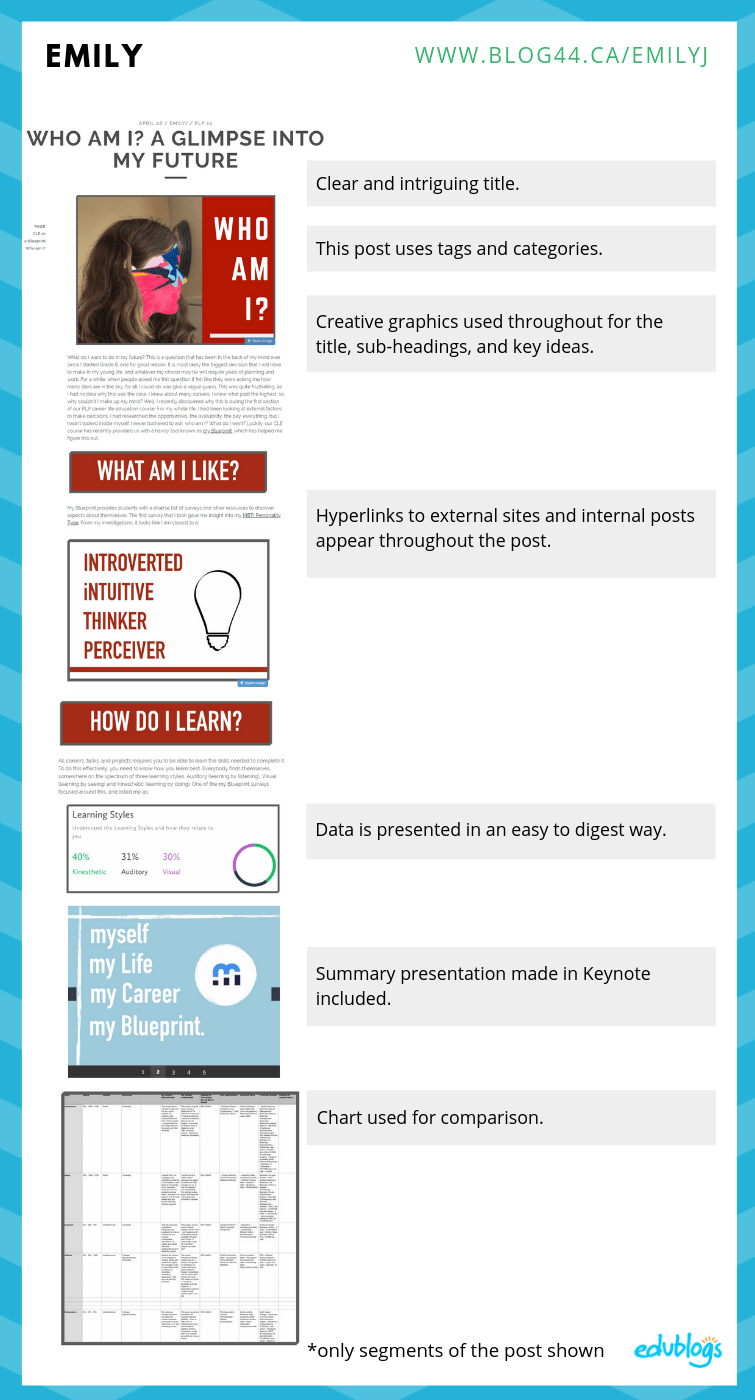
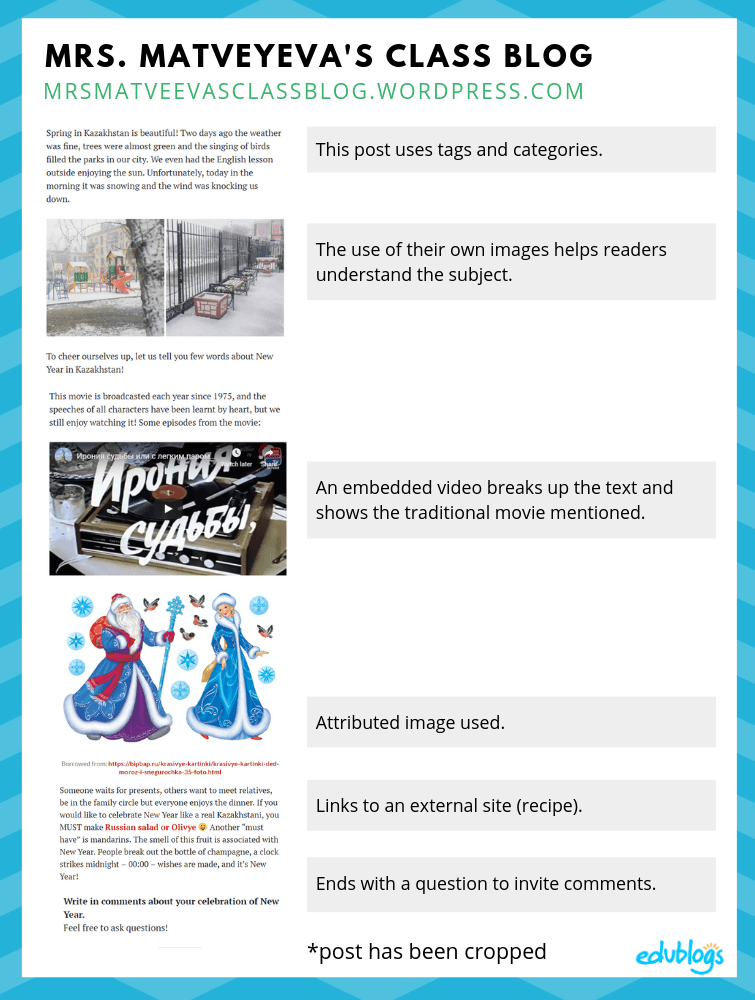
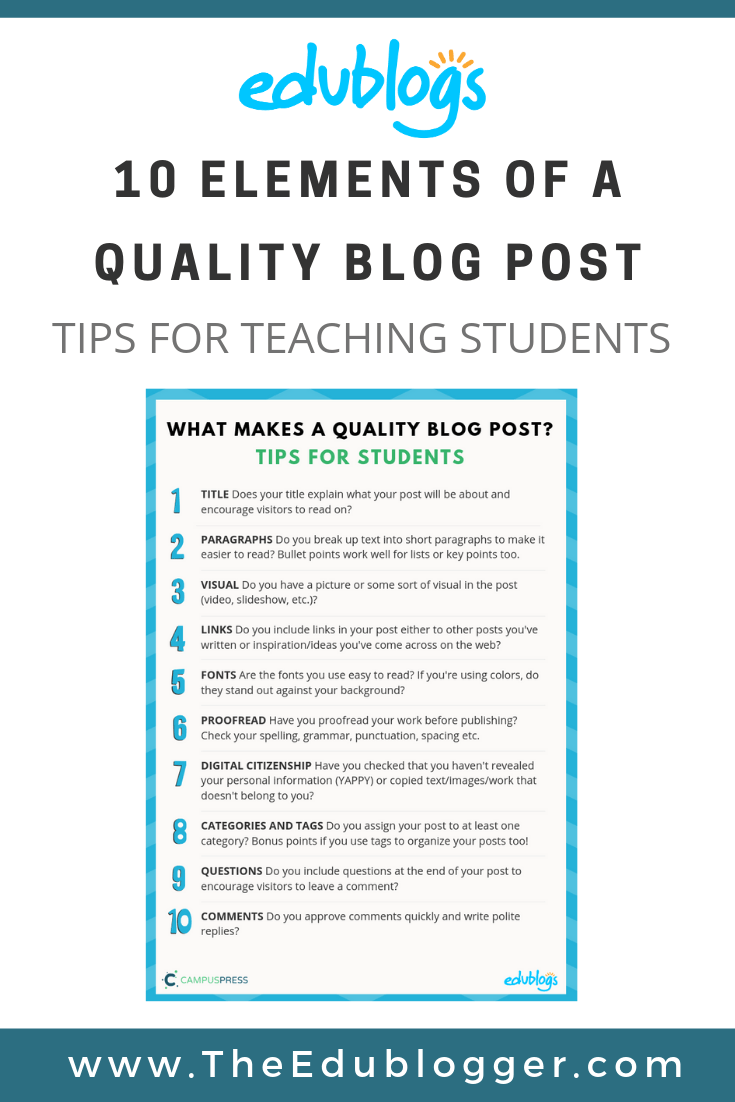

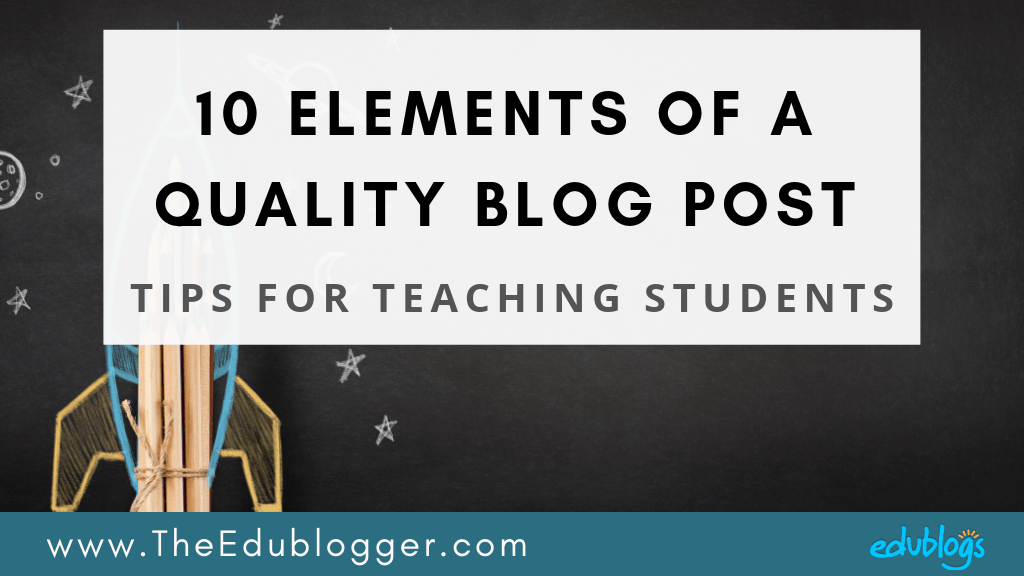
A great and very well illustrated guide to help all teachers. I am also trying to help our tutors through my blogs here: https://ia.wordpress.com/tag/menachem-moscovitz/
Let me know if you like it and beneficial for your followers.
This is really helpful thanks!
Thanks for posting. This should help me start my blog!
Hola, soy Gloria, me gustó mucho está publicación por hay consejos muy importantes para los estudiantes.
That was a real help Kathrine
Very easy and efficient to learn! Much appreciated Kath!
Great guide Kathleen! This really helped me!
Thank you for this blog! It is an amazing guide!!!
Thanks. I hope it helps!
good guide
This guide is one of the best I’ve found online! I’ve been looking for something just like this for my middle and high school students! Thanks so much for sharing!!
Hi Richard,
Thanks so much for the kind feedback. I hope it helps your middle and high school students!
Kathleen